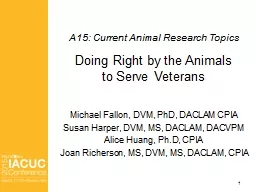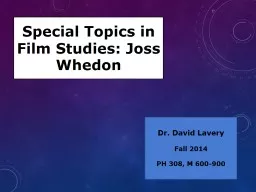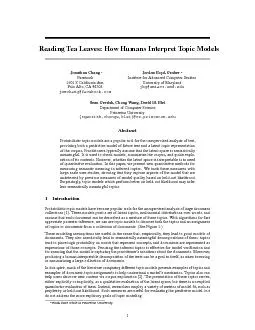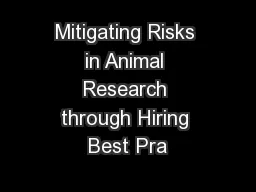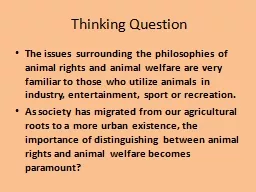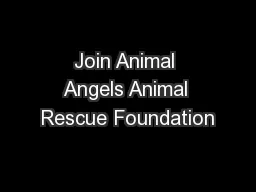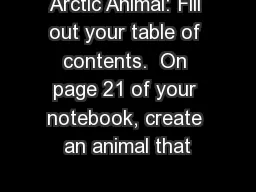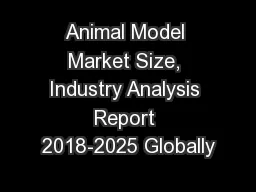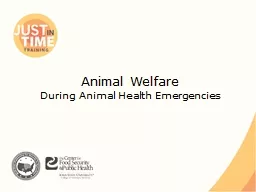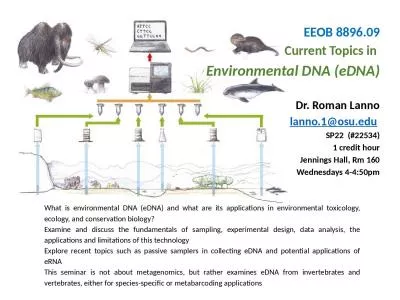PPT-A15: Current Animal Research Topics
Author : liane-varnes | Published Date : 2015-12-10
Doing Right by the Animals to Serve Veterans Michael Fallon DVM PhD DACLAM CPIA Susan Harper DVM MS DACLAM DACVPM Alice Huang PhD CPIA Joan Richerson MS DVM
Presentation Embed Code
Download Presentation
Download Presentation The PPT/PDF document "A15: Current Animal Research Topics" is the property of its rightful owner. Permission is granted to download and print the materials on this website for personal, non-commercial use only, and to display it on your personal computer provided you do not modify the materials and that you retain all copyright notices contained in the materials. By downloading content from our website, you accept the terms of this agreement.
A15: Current Animal Research Topics: Transcript
Download Rules Of Document
"A15: Current Animal Research Topics"The content belongs to its owner. You may download and print it for personal use, without modification, and keep all copyright notices. By downloading, you agree to these terms.
Related Documents

